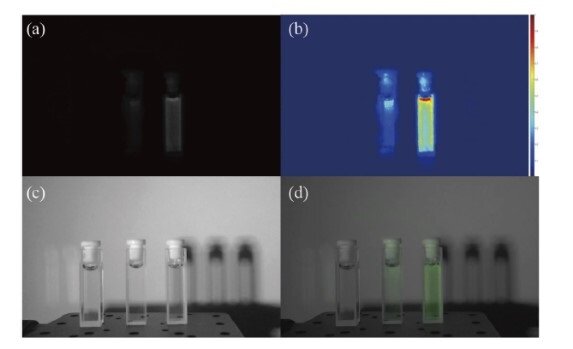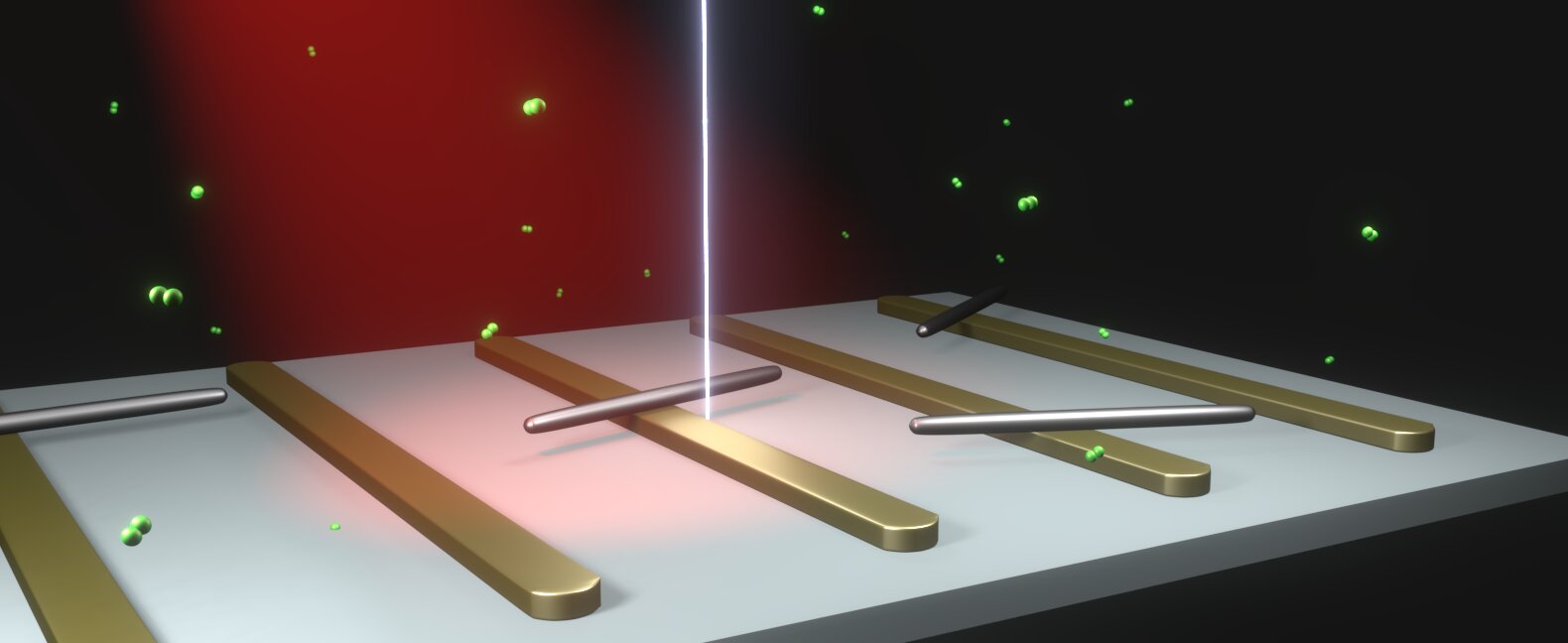#Bio-inspired endoscope provides 3-D visible and near-infrared images simultaneously

“#Bio-inspired endoscope provides 3-D visible and near-infrared images simultaneously”

Researchers have developed a new bio-inspired medical endoscope that can acquire 3-D visible light and near-infrared fluorescence images at the same time. It features an optical design that combines the high-resolution 3-D imaging of human vision with the mantis shrimp’s capability to simultaneously detect multiple wavelengths of light.
Endoscopes with 3-D imaging capability can help surgeons precisely locate diseased tissue. Adding fluorescence imaging can make cancerous tissue light up for easier removal or highlight critical parts of the anatomy that need to be avoided during surgery.
In The Optical Society (OSA) journal Optics Express, Chenyoung Shi from the Chinese Academy of Sciences and colleagues describe and demonstrate the new multimodal endoscope. Although this is an early demonstration, the new endoscope is designed to directly replace existing endoscopes without requiring clinicians to learn how to use a new instrument.
“Existing fluorescence 3-D endoscopes require surgeons to switch working modes during operation to see the fluorescence images,” said Shi. “Because our 3-D endoscope can acquire visible and fluorescent 3-D images simultaneously, it not only provides more visual information but can also greatly shorten the operation time and reduce risks during surgery.”
Aiding robotic surgery
Although it could be used for any endoscopic procedure, the researchers designed the new multimodal endoscope for robotic surgery systems. These systems help increase the precision and accuracy of minimally invasive procedures and can help surgeons perform complicated tasks in confined areas of the body. For robotic surgery, the enhanced visual information provided by the new endoscope could help a surgeon who may be in a different room from the patient clearly distinguish various types of tissue in the surgical field.
“Although today’s robotic surgical systems require the surgeon to be close by, robotic surgery based on this multimodal 3-D endoscope might one day allow surgeons to remotely perform procedures in faraway locations,” said Shi. “This could help solve the problem of uneven distribution of medical resources and benefit people who live in areas with relatively poor medical conditions.”
The new multimodal endoscope achieves high-resolution 3-D imaging using two optical systems to form a binocular design much like that of human eyes. However, in this case, the optical design can accommodate both visible light like human eyes and the near-infrared wavelengths required for fluorescence imaging. This light is detected by a sensor inspired by the compound eyes of mantis shrimp, which not only detect multispectral information but also recognize polarized light. The sensor detects multiple parts of the electromagnetic spectrum by using pixels with different spectral and polarization responses.
To obtain high-quality 3-D images, the binocular optical system must have two optical systems with exactly the same parameters. “This places stringent requirements on the processing accuracy of optical components,” said Shi. “We were able to accomplish this accuracy using precision optical processing and combined this with chip-based spectroscopy technology to make this multimodal 3-D endoscope possible.”
Combining visible and fluorescence images
To test the new endoscope, the researchers analyzed its resolution, fluorescence imaging capability and ability to simultaneously obtain 3-D images with near-infrared and visible color information. The endoscope performed well and achieved a resolution as high as 7 line pairs per millimeter with visible light— the same as the best 3-D endoscopes used today—and 4 line pairs per millimeter under near-infrared illumination.
They then used the endoscope to acquire visible color and near-infrared ?uorescence images of three concentrations of indocyanine green. This near-infrared fluorescent label is approved by the FDA and used to label tumor tissues. Although the three samples could not be distinguished by the human eye, they could be clearly distinguished using the multimodal 3-D endoscope. The researchers also tested the endoscope’s 3-D imaging performance by using it to image a toy with many crisscross parts. The endoscope was able to produce 3-D images that did not cause eye fatigue, even after a long period of viewing.
The researchers plan to use the 3-D endoscope to perform additional biological and clinical imaging. They also plan to incorporate more wavelengths and the ability to sense polarization to provide even more visual information.
Chenyang Liu et al, Bio-inspired multimodal 3D endoscope for image-guided and robotic surgery, Optics Express (2020). DOI: 10.1364/OE.410424
Citation:
Bio-inspired endoscope provides 3-D visible and near-infrared images simultaneously (2020, December 22)
retrieved 22 December 2020
from https://medicalxpress.com/news/2020-12-bio-inspired-endoscope-d-visible-near-infrared.html
This document is subject to copyright. Apart from any fair dealing for the purpose of private study or research, no
part may be reproduced without the written permission. The content is provided for information purposes only.
If you liked the article, do not forget to share it with your friends. Follow us on Google News too, click on the star and choose us from your favorites.
For forums sites go to Forum.BuradaBiliyorum.Com
If you want to read more Like this articles, you can visit our Science category.



